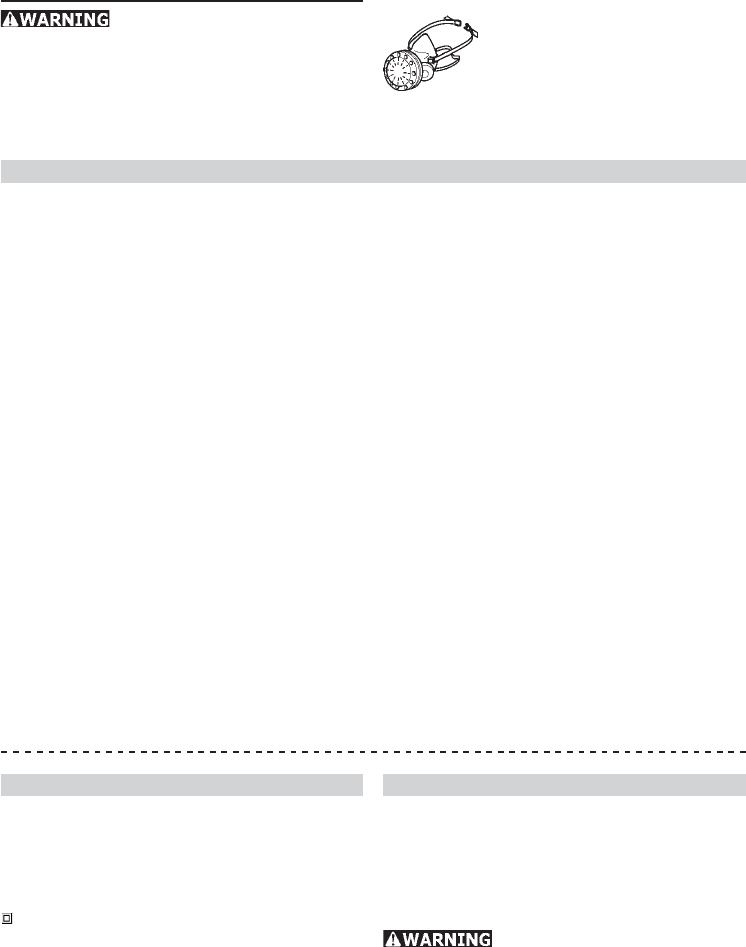
5
Technical data
Cordless drill/screwdriver CDD 9.6 CDD 12
Motor voltage 9.6 V 12 V
Idle-running speed 1. speed 0 – 380 rpm 0 - 380 rpm
2. speed 0 - 1100 rpm 0 - 1100 rpm
Max torque Soft boring (wood) 10 Nm 18 Nm
Hard boring (metal) 26 Nm 30 Nm
Adjustable torque 0.5 - 5 Nm 1 - 7 Nm
Chuck capacity 1 - 10 mm 1.5 - 13 mm
Max. drill diameter for metal / wood 12 mm / 20 mm 14 mm / 25 mm
Tool fitting in chuck 1/4” 1/4”
Weight with battery pack 1.8 kg (4.0 lbs) 2.0 kg (4.4 lbs)
Charger MC 15
Supply voltage (input) 120 V ~
Line frequency 60 Hz
Charging voltage (output) 4.8 - 12 V (DC)
Charging current quick charge max. 7.5 A
Compensation charge pulsating app. 0.03 A
Charging time forNiCd 1.4 Ah app. 13 min
NiCd 1.7 Ah app. 15 min
NiCd 2.0 Ah app. 18 min
Battery pack BPH 9.6 C BPH 12 C
Order number 488 437 488 438
Voltage 9.6 V 12 V
Cells 8 x 1.2 V, NiCd 10 x 1.2 V, NiCd
Capacity 2.0 Ah 2.0 Ah
Temp. range for charging 5 - 45 °C 5 - 45 °C
Monitoring of charge by means of NTC thermistor
Weight 0.5 kg (1.1 lbs) 0.6 kg (1.3 lbs)
The illustrations mentioned can be found at the beginning of the operating instructions.
Symbols
V volts
A amperes
Hz hertz
W watt
~ alternating current
n
0
no load speed
Class II Construction
rpm revolutions per minute
Intended use
The cordless drill/screwdrivers are suitable for
drilling metal, wood, plastic and similar
materials, as well as for fastening and screwing
down of screws with a diameter up to 6 mm.
The chargers have been designed to charge
the battery packs specified under "Technical
data".
The user will be liable for damage
due to improper use.
23 When servicing a tool, use only identical
replacement parts. Follow instructions in
the Maintenance section of this manual. Use
of unauthorised parts or failure to follow
Maintenance instructions may create a risk of
electric shock or injury.
Various dust created by power
sanding, sawing, grinding, drilling and other
construction activities contains chemicals known
(to the State of California) to cause cancer, birth
defects or other reproductive harm. Some
examples of these chemicals are:
•lead from lead-based paints,
•crystalline silica from bricks and cement and
other masonry products, and
•arsenic and chromium from chemically-
treated lumber.
The risk from these exposures varies, depending
on how often you do this type of work.
To reduce your exposure to these
chemicals: work in a well ventilated
area, and work with approved
safety equipment, such as dust
masks that are specially designed
to filter out microscopic particles.


















